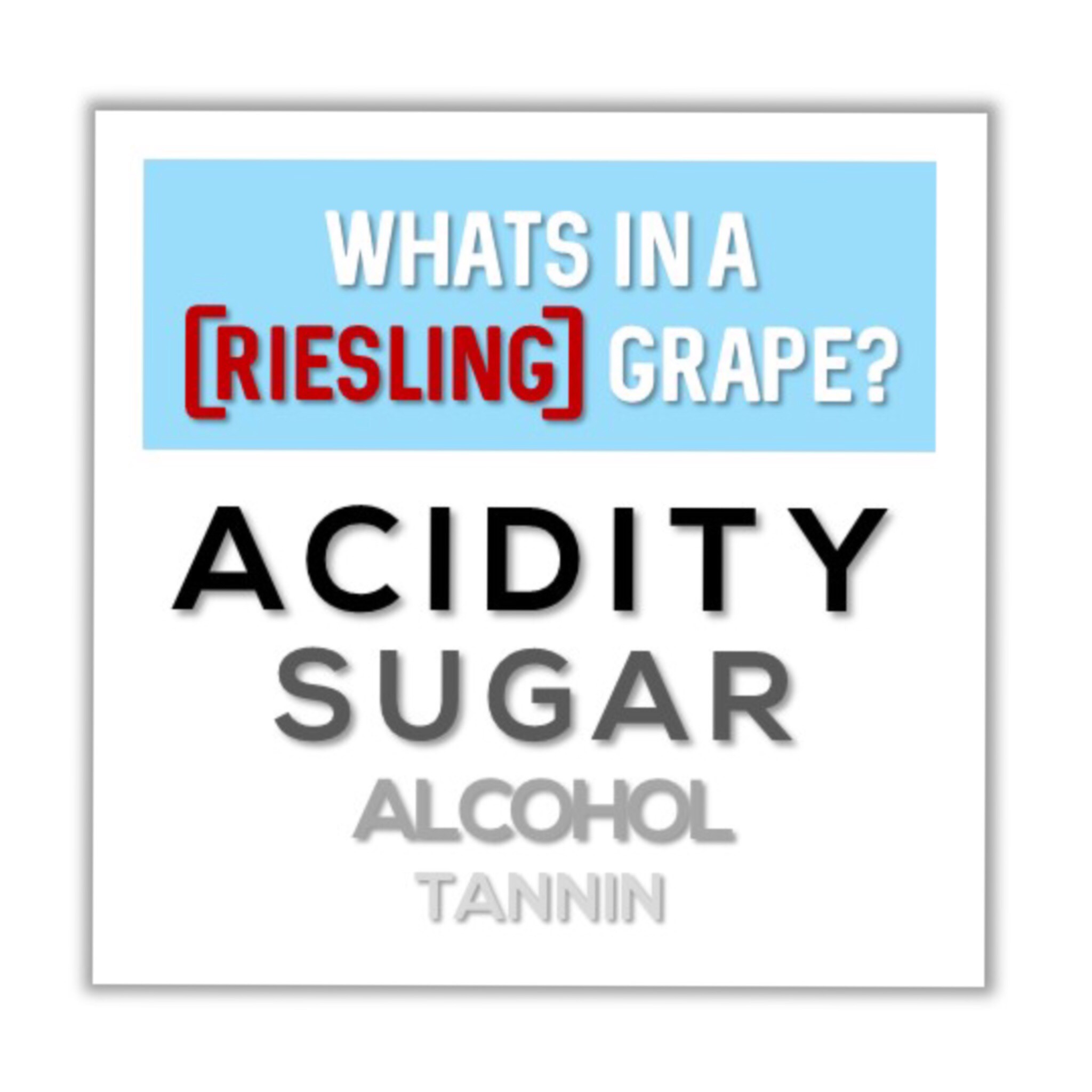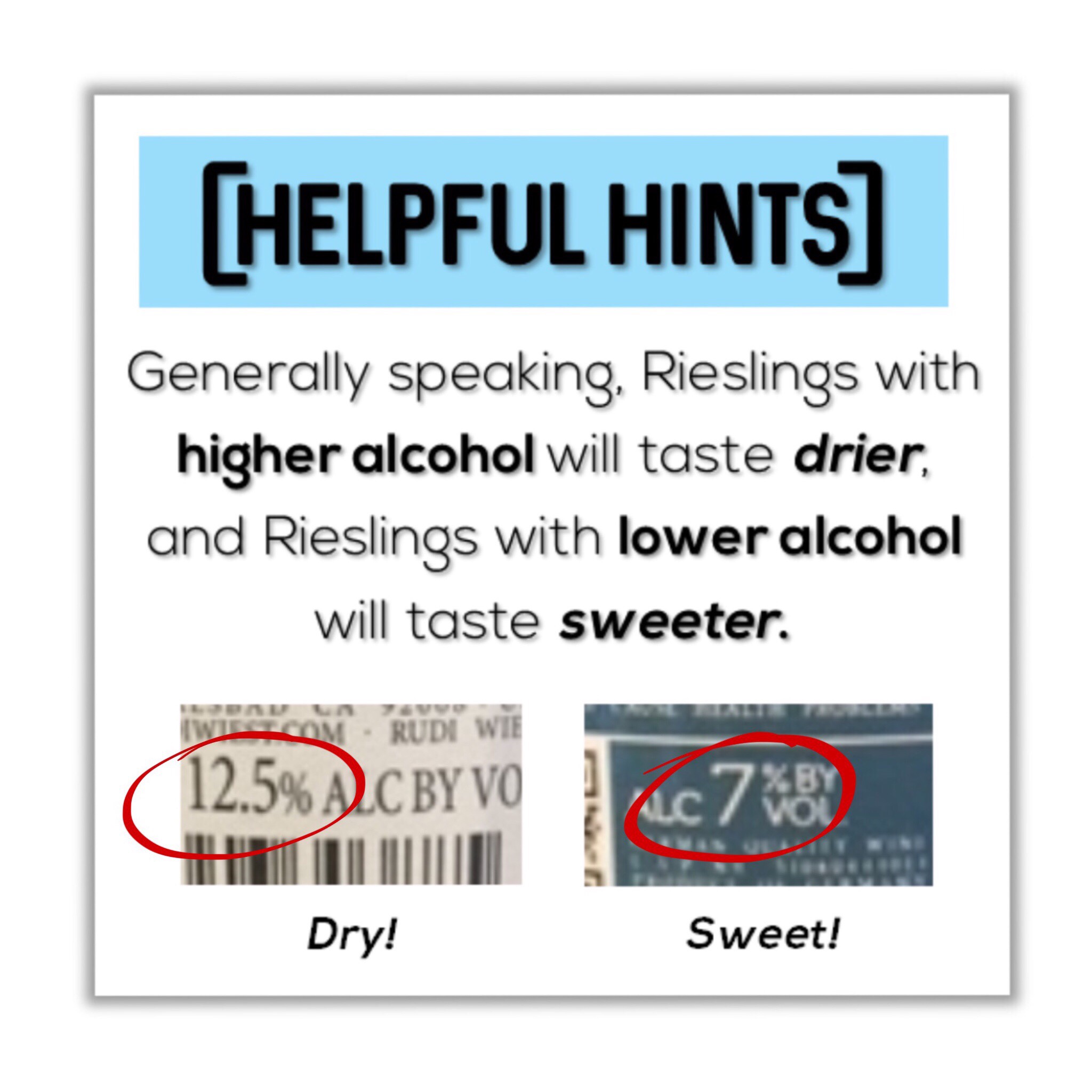THE LIE: All Riesling Is Sweet.
This is the first thing that gets drilled into every tender-footed wine novice. You’ve also been taught that sweet wines should be avoided at all costs if you want to be remotely worth your wine spit. Sweet wines are for 21-year-olds who are still wet behind the ears—along with the uncultured, the inexperienced, and the crass. And because of this, Riesling should be avoided like the plague.
Nothing could be further from the truth.
Riesling has been the hapless victim of decades of bad wine politics. It’s been horribly manipulated and mistreated, and all for the sake of making an extra buck in a tough economy.
 Riesling was once the most important and prestigious white wine in the world. It made its mysterious appearance in Germany’s Rheingau region in the 1500s, and to this day no one can say for sure where it came from or what its lineage is. For hundreds of years, Cistercian monks had been planting Burgundian varieties—Chardonnay and Pinot Noir—because that’s all they knew. But Germany’s cool climate isn’t as hospitable to these grapes as Burgundy is, and the wine was always thin, tart, and vinegary. With the advent of Riesling, the monks happened upon a wine that tasted better and lasted longer. Winemakers learned to keep oxygen away from the wine to preserve freshness, and soon Riesling became the king of wines, and the wine of kings.
Riesling was once the most important and prestigious white wine in the world. It made its mysterious appearance in Germany’s Rheingau region in the 1500s, and to this day no one can say for sure where it came from or what its lineage is. For hundreds of years, Cistercian monks had been planting Burgundian varieties—Chardonnay and Pinot Noir—because that’s all they knew. But Germany’s cool climate isn’t as hospitable to these grapes as Burgundy is, and the wine was always thin, tart, and vinegary. With the advent of Riesling, the monks happened upon a wine that tasted better and lasted longer. Winemakers learned to keep oxygen away from the wine to preserve freshness, and soon Riesling became the king of wines, and the wine of kings.
But fast-forward a few hundred years, and we find Germany on the losing end of not one but two world wars… followed by a small economic hiccup called the Great Depression. Many winemakers simply couldn’t afford to care about quality anymore, and started churning out as much cut-rate, simple, sickly-sweet wine as quickly and cheaply as they could. This is when wines like Liebfraumilch, Blue Nun and Black Tower had their big debut—and the world never forgot it.

Truth #1: Riesling like this is practically extinct.
Sure, Liebfraumilch and Blue Nun still exist, but they export only a fraction of what they did in their heyday. Plus, did you know that these wines aren’t even true Riesling? They’re white blends, of which Riesling usually only makes up a small percentage! (The other grapes used are Muller-Thurgau, Silvaner, and other easy-to-grow white varieties.)
Truth #2: Riesling can be made razor-sharp and bone dry.
Let’s talk about what makes Riesling different from so many other grapes. Riesling’s two major components are acidity and sugar. Because it has naturally high levels of both,  winemakers have the ability to make Riesling in whatever style they want—from a sticky-sweet dessert wine to a high-acid, mouth-puckering, bone-dry style. Additionally, acidity and sugar are natural preservatives in wine, which is why you can find Riesling that’s over 30 years old and still drinks like it was bottled yesterday. Lastly, acidity and sugar, when paired with a tempered level of alcohol, is what creates balance in wine. When all these components are in check, you’ll get a delicious wine every single time—no matter what it is or where it comes from.
winemakers have the ability to make Riesling in whatever style they want—from a sticky-sweet dessert wine to a high-acid, mouth-puckering, bone-dry style. Additionally, acidity and sugar are natural preservatives in wine, which is why you can find Riesling that’s over 30 years old and still drinks like it was bottled yesterday. Lastly, acidity and sugar, when paired with a tempered level of alcohol, is what creates balance in wine. When all these components are in check, you’ll get a delicious wine every single time—no matter what it is or where it comes from.
“So, how am I supposed to distinguish dry Riesling from the sweet stuff?”
Great question. I wish it was easy and straightforward, but it’s not. Germans are notorious for putting way too much information on their wine labels that mean absolutely nothing to the average wine drinker. But don’t let that deter you! Here are 3 ways to guide you through the jungle of Riesling mumbo-jumbo:
- Always look at the back label first. If you’re lucky, you’ll find an easy-to-read “sweetness scale” that will tell you if the wine is dry, medium dry, medium sweet, or sweet. (Feel free to e-mail your thanks to the good people at the International Riesling Foundation.) This scale is usually only used in the U.S. and Australia, but some forward-thinking German wineries are beginning to use it too, especially ones from the Pfalz and Rheingau regions.

- Look at the alcohol level. This trick doesn’t work every time so it shouldn’t be viewed as a hard-and-fast rule, but it’s usually pretty helpful. The alcohol and sugar levels found in Riesling have an inverse relationship. The higher the alcohol, the
 less perceptible the sweetness—and vice versa. The winemaker can choose to ferment more or less sugar to become alcohol, thus making the wine taste drier or sweeter.
less perceptible the sweetness—and vice versa. The winemaker can choose to ferment more or less sugar to become alcohol, thus making the wine taste drier or sweeter. - Know the different styles of various Riesling regions. Germany is a country divided when it comes to Riesling. The world’s arguably greatest Rieslings come from the Mosel Valley, where it’s common to make Riesling with a good amount of
 residual sugar. But many of the new trending (and dry!) Rieslings are coming from different places in Germany, including the Pfalz and Rheingau regions. The well-known Pfalz producer Reichsrat Von Buhl has gone to great lengths to let the world know about their “Bone Dry” Riesling!
residual sugar. But many of the new trending (and dry!) Rieslings are coming from different places in Germany, including the Pfalz and Rheingau regions. The well-known Pfalz producer Reichsrat Von Buhl has gone to great lengths to let the world know about their “Bone Dry” Riesling!
But Germany isn’t the only country to make Riesling. In fact,
many Riesling lovers gravitate to Austria, Australia, Alsace, the U.S. and even Slovenia for different expressions of this ultra-accommodating grape. These countries tend to make their Rieslings in a dry style, although there are exceptions.
Truth #3: “Sweet wine” does NOT equal “bad wine.”
The idea that sweet wines are bad wines is one of the most unfortunate things to ever happen to the wine world. Sweet wine can be bad, but so can dry wine! It’s all a matter of production quality, and bad production can happen to any wine. (Just ask Merlot.) Everyone has their own personal taste preferences, but don’t knock a wine until you’ve tried it. To experience the glory of a well-produced, sweeter-styled Riesling, pick up a bottle of Auslese or Spatlese (loosely translated: “late- harvested”) Riesling from the Mosel, or this delicious example. Treat yourself to some well-made Chinese or Thai food, or to some authentic slow-cooked German pork cutlets with sauerkraut or fresh applesauce on the side. Your taste buds will explode when these foods and a sweeter-styled Riesling come together—it’s truly a match made in heaven!
harvested”) Riesling from the Mosel, or this delicious example. Treat yourself to some well-made Chinese or Thai food, or to some authentic slow-cooked German pork cutlets with sauerkraut or fresh applesauce on the side. Your taste buds will explode when these foods and a sweeter-styled Riesling come together—it’s truly a match made in heaven!
The Riesling your mother told you about is not the Riesling of today. It’s bright, refreshing, exciting, and one of the most perfect food-pairing wines you’ll ever come across. Have it alongside meat and fish, drink it with salads, appetizers and vegetarian dishes, or pair it with dessert. Drink it during scorching summer days, and drink it next to a roaring fire in the dead of winter. Enjoy it young and fresh, and savor it in its regal old age. There’s a Riesling out there for everyone. Guten Appetit!